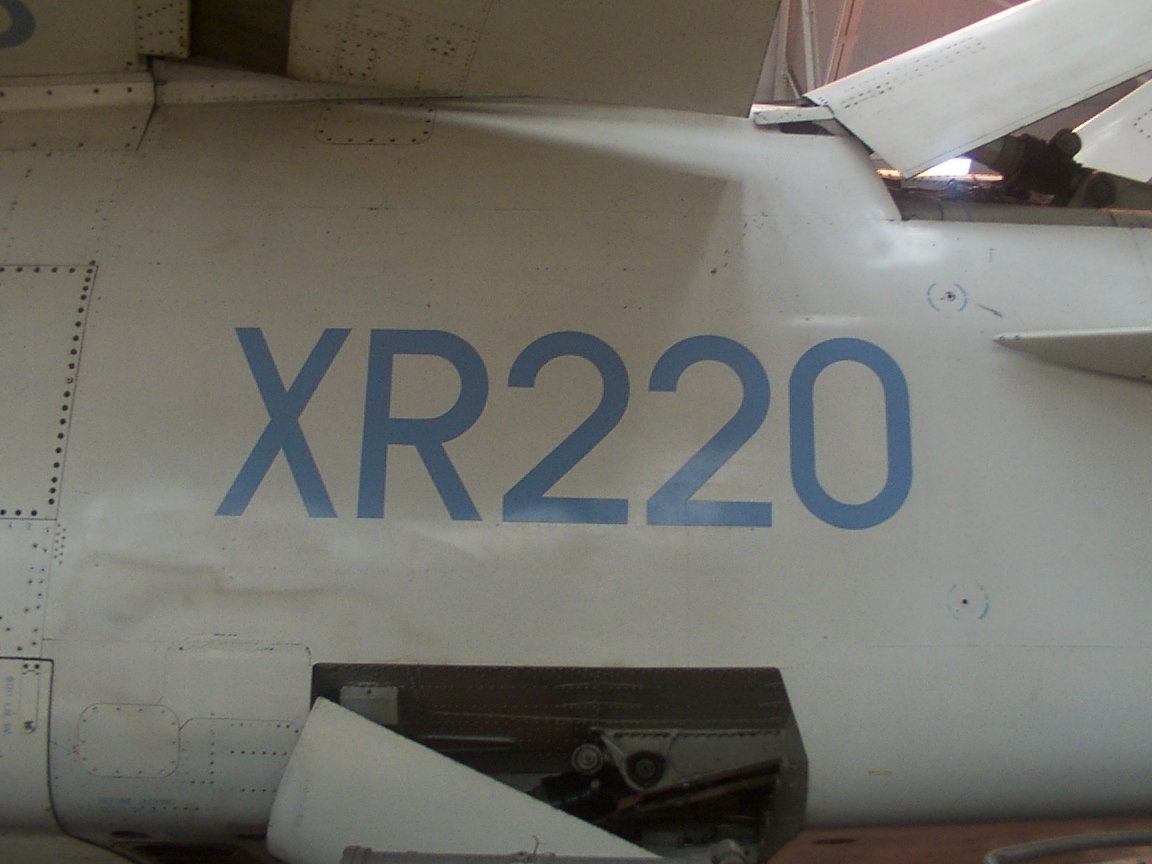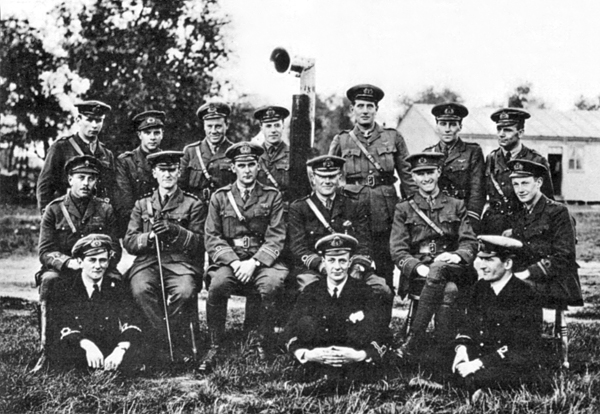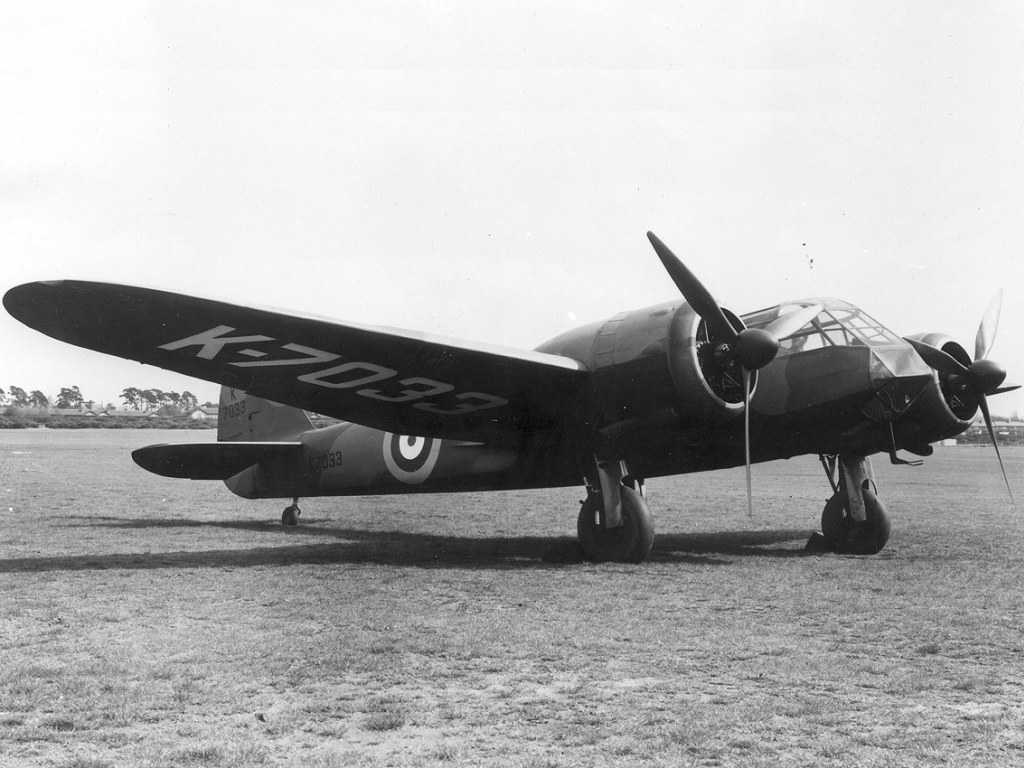|
United Kingdom Military Aircraft Serials
United Kingdom military aircraft serial numbers are aircraft registration numbers used to identify individual military aircraft in the United Kingdom (UK). All UK military aircraft are allocated and display a unique registration number. A unified registration number system, maintained initially by the Air Ministry (AM), and its successor the Ministry of Defence (MoD), is used for aircraft operated by the Royal Air Force (RAF), Fleet Air Arm (FAA), and Army Air Corps (AAC). Military aircraft operated by government agencies and civilian contractors (for example QinetiQ) are also assigned registration numbers from this system. When the Royal Flying Corps (RFC) was formed in 1912, its aircraft were identified by a letter/number system related to the manufacturer. The prefix 'A' was allocated to balloons of No.1 Company, Air Battalion, Royal Engineers, the prefix 'B' to aeroplanes of No.2 Company, and the prefix 'F' to aeroplanes of the Central Flying School.Bruce 1956, p.922 ... [...More Info...] [...Related Items...] OR: [Wikipedia] [Google] [Baidu] |
Royal Naval Air Service
The Royal Naval Air Service (RNAS) was the air arm of the Royal Navy, under the direction of the Admiralty's Air Department, and existed formally from 1 July 1914 to 1 April 1918, when it was merged with the British Army's Royal Flying Corps to form the Royal Air Force (RAF), the world's first independent air force. It was replaced by the Fleet Air Arm, initially consisting of those RAF units that normally operated from ships, but emerging as a separate unit similar to the original RNAS by the time of World War 2. Background In 1908, the British Government recognised the military potential of aircraft. The Prime Minister of the United Kingdom, Prime Minister, H. H. Asquith, approved the formation of an "Advisory Committee for Aeronautics" and an "Aerial Sub-Committee of the Committee of Imperial Defence". Both committees were composed of politicians, British Army, army officers and Royal Navy officers. On 21 July 1908 Captain Reginald Bacon, who was a member of the Aerial Na ... [...More Info...] [...Related Items...] OR: [Wikipedia] [Google] [Baidu] |
Second World War
World War II or the Second World War, often abbreviated as WWII or WW2, was a world war that lasted from 1939 to 1945. It involved the vast majority of the world's countries—including all of the great powers—forming two opposing military alliances: the Allies and the Axis powers. World War II was a total war that directly involved more than 100 million personnel from more than 30 countries. The major participants in the war threw their entire economic, industrial, and scientific capabilities behind the war effort, blurring the distinction between civilian and military resources. Aircraft played a major role in the conflict, enabling the strategic bombing of population centres and deploying the only two nuclear weapons ever used in war. World War II was by far the deadliest conflict in human history; it resulted in 70 to 85 million fatalities, mostly among civilians. Tens of millions died due to genocides (including the Holocaust), starvation, ma ... [...More Info...] [...Related Items...] OR: [Wikipedia] [Google] [Baidu] |
DH100 Sea Vampire F1 LZ551 G (6877312053)
DH1 may refer to: * DH-1 (rocket), a proposed two-stage rocket design * Airco DH.1, a British First World War biplane * EMD DH1, an experimental switching locomotive * Häfeli DH-1 The Häfeli DH-1 was a 1910s Swiss two-seat reconnaissance aircraft, built by the aircraft department of the Federal Construction Works (''Eidgenoessische Konstruktionswerkstaette'', K+W) at Thun, Switzerland. Development and design In 1915 K + ..., a Swiss reconnaissance aircraft built 1916 * Rhodesia Railways class DH1, a class of diesel locomotive {{Letter-NumberCombDisambig ... [...More Info...] [...Related Items...] OR: [Wikipedia] [Google] [Baidu] |
Bureau Number
In the United States, all military aircraft display a serial number to identify individual aircraft. These numbers are located on the aircraft tail, so they are sometimes referred to unofficially as "tail numbers". On the Northrop Grumman B-2 Spirit bomber, lacking a tail, the number appears on the nose gear door. Individual agencies have each evolved their own system of serial number identification. Aircraft serials are part of the Aircraft Visual Identification System, which also includes the aircraft's tail code and Modex. History United States Army Signal Corps In 1908, the United States government purchased its first heavier than air aircraft. The aircraft, a Wright Model A, was used by the aviation section of the United States Army Signal Corps and was issued with serial number 1. Subsequent aircraft were numbered in sequence. United States Army Air Service In 1918, the aviation section of the Army Air Service became the United States Army Air Service (USAAS), but the se ... [...More Info...] [...Related Items...] OR: [Wikipedia] [Google] [Baidu] |
US Navy
The United States Navy (USN) is the maritime service branch of the United States Armed Forces and one of the eight uniformed services of the United States. It is the largest and most powerful navy in the world, with the estimated tonnage of its active battle fleet alone exceeding the next 13 navies combined, including 11 allies or partner nations of the United States as of 2015. It has the highest combined battle fleet tonnage (4,635,628 tonnes as of 2019) and the world's largest aircraft carrier fleet, with eleven in service, two new carriers under construction, and five other carriers planned. With 336,978 personnel on active duty and 101,583 in the Ready Reserve, the United States Navy is the third largest of the United States military service branches in terms of personnel. It has 290 deployable combat vessels and more than 2,623 operational aircraft . The United States Navy traces its origins to the Continental Navy, which was established during the American Revolut ... [...More Info...] [...Related Items...] OR: [Wikipedia] [Google] [Baidu] |
Douglas Skyraider
The Douglas A-1 Skyraider (formerly known as the AD Skyraider) is an American single-seat attack aircraft in service from 1946 to the early 1980s. The Skyraider had an unusually long career, remaining in front-line service well into the Jet Age (when most piston-engine attack or fighter aircraft were replaced by Jet aircraft); thus becoming known by some as an "anachronism". The aircraft was nicknamed "Spad", after the French World War I fighter. It was operated by the United States Navy (USN), the United States Marine Corps (USMC), and the United States Air Force (USAF), and also saw service with the British Royal Navy, the French Air Force, the Republic of Vietnam Air Force (RVNAF), and others. It remained in U.S. service until the early 1970s. The jet powered A-10 Thunderbolt II was based on specifications for a modernized Skyraider with a heavy payload and good endurance. Design and development The piston-engined, propeller-driven Skyraider was designed during World War I ... [...More Info...] [...Related Items...] OR: [Wikipedia] [Google] [Baidu] |
Bristol Blenheim
The Bristol Blenheim is a British light bomber aircraft designed and built by the Bristol Aeroplane Company (Bristol) which was used extensively in the first two years of the Second World War, with examples still being used as trainers until the end of the war. Development began with the ''Type 142'', a civil airliner, in response to a challenge from Lord Rothermere to produce the fastest commercial aircraft in Europe. The ''Type 142'' first flew in April 1935, and the Air Ministry, impressed by its performance, ordered a modified design as the ''Type 142M'' for the Royal Air Force (RAF) as a bomber. Deliveries of the newly named Blenheim to RAF squadrons commenced on 10 March 1937. In service the Type 142M became the Blenheim Mk.I which would be developed into the longer Type 149, designated the Blenheim Mk.IV, except in Canada where Fairchild Canada built the Type 149 under licence as the Bolingbroke. The Type 160 Bisley was also developed from the Blenheim, but was already o ... [...More Info...] [...Related Items...] OR: [Wikipedia] [Google] [Baidu] |
Hurricane Mkiic Of The Bbmf Arp
A tropical cyclone is a rapidly rotating storm system characterized by a low-pressure center, a closed low-level atmospheric circulation, strong winds, and a spiral arrangement of thunderstorms that produce heavy rain and squalls. Depending on its location and strength, a tropical cyclone is referred to by different names, including hurricane (), typhoon (), tropical storm, cyclonic storm, tropical depression, or simply cyclone. A hurricane is a strong tropical cyclone that occurs in the Atlantic Ocean or northeastern Pacific Ocean, and a typhoon occurs in the northwestern Pacific Ocean. In the Indian Ocean, South Pacific, or (rarely) South Atlantic, comparable storms are referred to simply as "tropical cyclones", and such storms in the Indian Ocean can also be called "severe cyclonic storms". "Tropical" refers to the geographical origin of these systems, which form almost exclusively over tropical seas. "Cyclone" refers to their winds moving in a circle, whirling round ... [...More Info...] [...Related Items...] OR: [Wikipedia] [Google] [Baidu] |
Avro Manchester
The Avro 679 Manchester was a British twin-engine heavy bomber developed and manufactured by the Avro aircraft company in the United Kingdom. While not being built in great numbers, it was the forerunner of the famed and vastly more successful four-engined Avro Lancaster, which was one of the most capable strategic bombers of the Second World War. Avro designed the Manchester in conformance with the requirements laid out by the British Air Ministry Specification P.13/36, which sought a capable medium bomber with which to equip the Royal Air Force (RAF) and to replace its inventory of twin-engine bombers, such as the Armstrong Whitworth Whitley, Handley Page Hampden and Vickers Wellington. Performing its maiden flight on 25 July 1939, the Manchester entered squadron service in November 1940, just over twelve months after the outbreak of the war. Operated by both RAF and the Royal Canadian Air Force (RCAF), the Manchester came to be regarded as an operational failure, primarily ... [...More Info...] [...Related Items...] OR: [Wikipedia] [Google] [Baidu] |
Fairey IIIF
The Fairey Aviation Company Fairey III was a family of British reconnaissance biplanes that enjoyed a very long production and service history in both landplane and seaplane variants. First flying on 14 September 1917, examples were still in use during the Second World War. Design and development The prototype of the Fairey III was the N.10 floatplane, which was designed and built in 1917 by Fairey Aviation (along with the smaller N.9) to meet Admiralty Specification N.2(a) for a carrier-based seaplane for the Royal Naval Air Service during the First World War. N.10, also known by its constructor's number F.128 was a two-bay biplane with folding wings and powered by a 260 hp (190 kW) Sunbeam Maori engine. It first flew from the Port Victoria seaplane station on the Isle of Grain, Kent on 14 September 1917.Taylor 1988, p.71. Following tests both as a floatplane and with a conventional wheeled undercarriage, production orders were placed for two versions both powered b ... [...More Info...] [...Related Items...] OR: [Wikipedia] [Google] [Baidu] |







